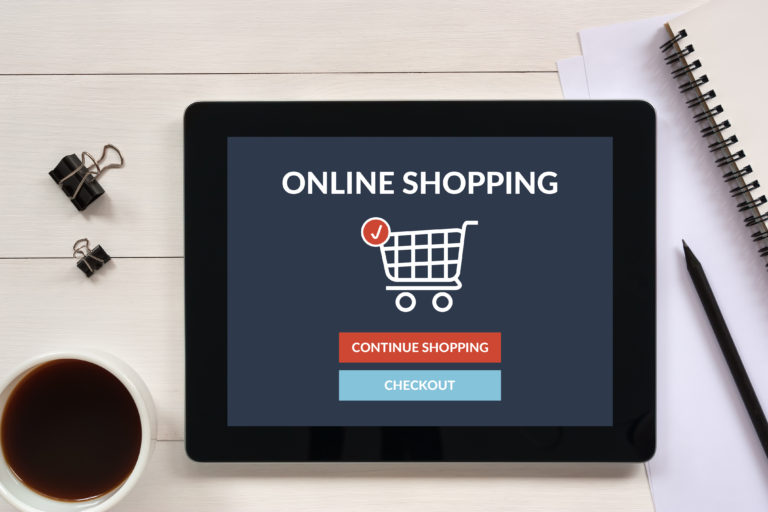Ecommerce: Build Your Own Website to Sell Products
One of the most common misconceptions that many people still have is that it’s impossible to build a website when you aren’t a coder or a programmer.
While it’s true that the work gets significantly easier if you know how to write code, anyone who understands computers, knows how to browse the internet, installs software, searches and implements simple solutions, and is willing to learn, can create a simple, functional website.
So if you are trying to enter the e-commerce sphere (whether or not you have a physical retail business), you need to understand how to build your own website to sell products. It’s not rocket science, and you don’t necessarily need specialized training.
If you are willing to give it some time, there are thousands of tutorials and step-by-step guides that can help you create your own website.
E-commerce is rapidly growing, and global e-commerce sales are expected to reach $27 trillion by the end of this year.
So if you already have products to sell, start working on your website and lift your business off the ground.
How to Build Your Own Website To Sell Products
There are multiple steps you can follow and several different approaches.
We believe that it’s better to start with choosing the domain name.
1. Choosing an E-Commerce Domain Name
If you don’t already have a unique domain/brand name, which (miraculously) is still available, you need to do some research.
You need something that blends well with your SEO (techniques that help you rank higher in Google searches) and is also memorable.
If you think of a name and it’s already taken, it might still be available on a less used extension (i.e., .store instead of .com).
Another thing you can do is add your brand name with your most-used keyword (product name), a long-tail keyword, or a location.
This is important because your brand and domain names play an important role in breeding consumer loyalty.
2. The Right Website Builder
You will need to choose a website-building platform when you build your own website to sell products.
The most commonly used website builder in the world is WordPress.
It’s free, easy, and has plenty of free plug-ins to help you customize and improve your website.
It’s also one of the oldest of the similar platforms, so there is a lot of supporting material available.
The second option, which is loved by beginners for its simplicity, is Wix.
It has plenty of e-commerce templates you can work on, and creating a website is as easy as dragging and dropping items from menus.
But when it comes to e-commerce websites, you have some other options as well.
Shopify, for example, is one of the leading e-commerce platforms in the world.
If you want to lean heavily on social media, Squarespace might be another good choice.
You may not make the right choice in the beginning and may have to switch to another builder.
So it’s a good idea to try the free version first.
If you think you have the hang of it, you can buy a website-building plan that suits your needs and budget.
It’s usually worth the investment.
It’s important to know that some paid plans allow you to choose an option where the builder creates a website for you.
But the website it produces might be too generic, and you may not be able to get it revised too much.
3. Pick and Customize the Template
Choosing the right e-commerce store can be tricky, especially when you are browsing from a decent collection of templates and themes, and each one looks better than the other.
The good idea is to choose something simple that matches your products and the content you are planning to put on the website.
For example, if you are selling books, a subdued, rustic theme might be better.
And a flashy, colorful theme might suit certain fashion-related products.
Before you scour through templates, make a checklist of what you need on your website: Search capability, navigation bar, gallery, scrolling/parallax capability, category pages, etc.
Choose a theme that has all of those items.
Some templates are too crowded, which might make it irritating for visitors to find the right product, so avoid them.
The template or theme should be customizable, feature-rich, SEO-compatible and friendly, and compatible across different browsers and especially on cell-phones because that’s where most of the data is coming from nowadays.
Then you have to customize the theme to give it your own unique look.
Make sure it conveys the brand image.
Everything from the font choice to positioning products, embedding social media and images create an impact.
4. Add Products and Choose a Payment Method
Your template would have a generic product placement page. You can use that or customize it to suit your needs. Now when you place your product, every aspect of the job is essential. The image you choose for your product, the product description you write, and how easy it is for your website’s visitors to navigate the product page.
Product description should be SEO friendly, and if written the right way, it can help drive more organic traffic towards your website.
Be sure to add customer review options.
Put in all the necessary information about the product but not all the information.
Find out which specs of products like yours that customers look for, highlight them, so it’s easy for customers to understand the product in a glance.
If you can put in the option to compare different products, that can be grand.
Each builder offers its own range of payment methods. Some just support Paypal and Stripe, some also support Apply pay and digital wallets.
You can check out the pages of some of your established competitors, and also go through their reviews to see if consumers of your products have a favorite payment method or aversion to a method.
Different payment methods have different fees and transfer times. So make sure you choose the method that suits both you and your consumer.
5. Shipping
Shipping should be a part of your broader business plans.
Some shipping methods cost way too much for a budding e-commerce retailer, while some might be too slow/complicated for your consumer’s liking.
Your shipping settings also include where you want to ship to.
If you are just a local retailer and not accepting foreign orders, you will have to see which areas you can easily ship within the country.
Some regions might cost too much to ship to.
Then there are different types of shipping options.
You can ship for free, for a flat rate, or for a percentage of the price.
You can also encourage local pickups or offer real-time quotes based on the prices of the shippers you are using.
Conclusion
Once you’ve squared away your shipping, all that’s left is to test the website, ideally, every feature on different devices to see if it’s all working seamlessly, and then go live with the website.
It might take some time and a lot of effort, but it’s far from impossible to build your own website to sell products when you don’t even know the basics of coding.


